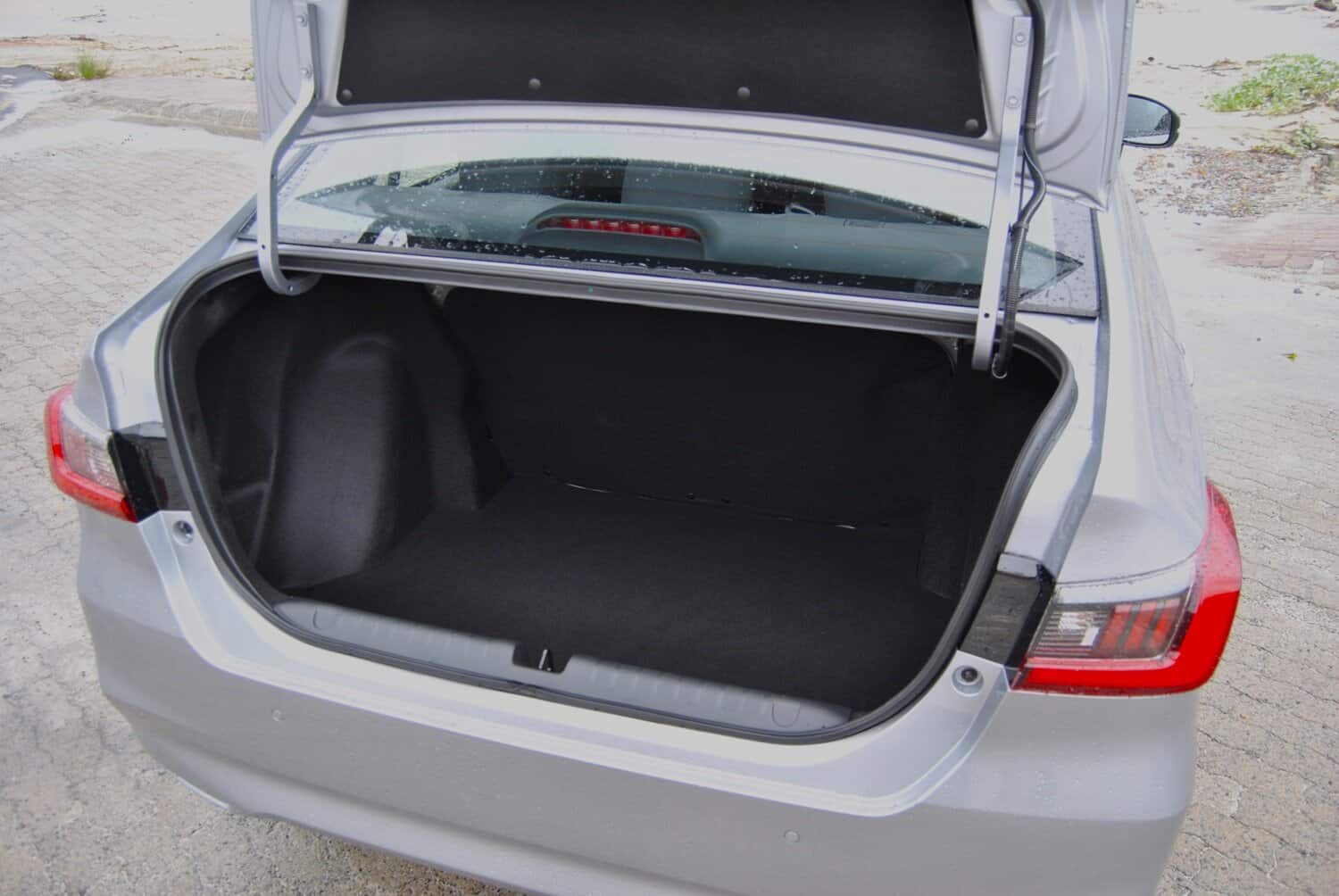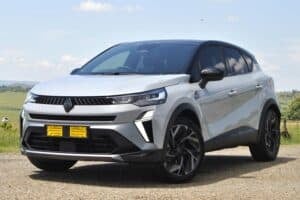New third generation Amaze small sedan has a sub-R300 000 price tag, but also more equipment in an overall package better devised than before.

With the Jazz, subsequently renamed Fit, having moved upmarket and the Brio long since discontinued, the Indian-made Amaze has been Honda’s best-seller in South Africa in a somewhat ironic turn of events.
Against the industry norm
Although originally spun-off of the Brio as the small sedan equivalent, the Amaze, with the unveiling of the second generation in 2018, became a model of its own and also the replacement for the hatch that bowed out with the original generation.
ALSO READ: Wraps officially come off elevate(d) all-new Honda Amaze
Against the trend of hatches being favoured above sedans when taking the importance of small crossovers and SUVs out of the equation, the third generation Amaze comes at a critical time for a brand that has fallen far from its previous highs against the backdrop of larger, comparatively priced and yes, SUVs from China.
As a way of combatting this, in addition to assuring its stay in South Africa despite speculation of its future, Honda has increased the new Amaze’s sticker prices by between R1 300 and R2 000 over its predecessor despite it being a completely new product with significantly higher levels of specification.
Largely new
Described at the time of its unveiling last year as a package that “outclasses” its rivals, the Rajasthan-assembled Amaze has been made to look more compact than its predecessor, with traces of its sibling, the Elevate SUV, and the segment-up Ballade being evident on the design front.
Based on the same platform as the Elevate, and still adhering to India’s sub-four regulations, the official launch in a cold, wet and miserable Cape Town this week came with a series of welcome improvements over the old Amaze, but disparages on one key front unlikely to go away soon.

Styled in accordance with a philosophy Honda calls progressive, protective and sporty, the Amaze range once again spans three models and two trim levels, of which two were sampled at the event.
Up front, the familiarity continues with the retention of the normally aspirated 1.2-litre petrol engine that channels 66kW/110Nm to the front wheels via either a five-speed manual gearbox or a CVT.
In both instances, the transmissions have undergone revisions to be smoother while also helping with driveability.
Much better on the eye
A visual improvement over the old Amaze, the Elevate-style front facia has seen the standard incorporation of LED headlights across all three variants, as well as 15-inch alloy wheels and a black honeycomb pattern for the new grille.

At the rear, an almost coupe-style sloping roof design has been opted for, and although similar to the old Amaze in length, wheelbase and height, width has been increased by 38 mm to 1 733 mm.
Somewhat curiously, this has seen boot space drop from 420-litres to 416-litres, which still makes the Amaze more practical than its immediate rivals, the Hyundai Grand i10 Sedan (402 L) and the equally new Suzuki DZire (382 L).

In terms of colours, five hues are available; Platinum White Pearl, Obsidian Blue Pearl, Meteoroid Grey Metallic, Lunar Silver Metallic and Radiant Red Metallic.
Massive improvement inside
Inside, the Amaze’s biggest attribute is the Elevate-derived interior that appears more modern but still functional.
Unlike in its home market, all South African-market models get a black interior with black fabric seats as standard – the tacky previous black-and-brown imitation leather option having been dropped entirely.

Feeling better in terms of fit-and-finish with the odd scratchy surface still present – not surprising given the Amaze’s price – the cabin remains ergonomically in-check with physical buttons and a straightforward to use new eight-inch freestanding infotainment system.
A standard fixture across the entire range as well, the system incorporates wireless Apple CarPlay and Android Auto, and is contrasted by an equally seven-inch digital instrument cluster, also on all variants.
Spec box
In terms of specification, the Trend, which only comes with the manual gearbox, starts the range off by incorporating not only the already mentioned features, but also the following:

- four-speaker sound system;
- front and rear armrests;
- dual USB ports;
- automatic air conditioning with rear vents;
- electric windows and mirrors;
- multi-function steering wheel;
- height-adjustable front seats;
- keyless entry;
- push-button start
Taking care of safety are dual front airbags, a reverse camera, rear parking sensors, Vehicle Stability Control, Hill Start Assist and ABS as well as EBD.

Up next, the flagship Comfort replaces the wire-effect wheels with dual-tone alloys still of 15-inches, while also gaining LED fog lamps, a wireless smartphone charger, Auto High Beam Assist headlights, a six-speaker sound system and side as well as curtain airbags for a total of a six
The only derivative to have the option of the manual or CVT, opting for the latter sees the added inclusion of paddle shifters as well as a segment first Remote Engine Start.
More than likely as a result of costs, neither Trend or Comfort receives cruise control, or indeed Honda’s Sensing array of driver assistance systems offered in India, these being the LaneWatch side camera, Lane Departure Warning, Collision Mitigation Braking, Lane Keep Assist and Lead Vehicle Alert to name a few.
On the move
On the move, the first leg of the route from the V&A Waterfront along the coast passed Muizenburg, Kalk Bay and then slightly more inland to eventually end at Hout Bay, involved the Trend.
Given the appalling conditions that lashed the Mother City, progress was anything but swift, yet the Amaze felt composed and the ride forgiving, given its suspension tuning.
That being said, the ride didn’t “hit through” when tasked with lesser well maintained sections of the route, while stability wasn’t adversely affected by the Cape doctor.

Despite being at sea level, the normally aspirated petrol still isn’t a ball of fire and, in typical Honda fashion, requires revving until the stereotypical “VTEC kicks in” power band is reached.
A free-revving unit nonetheless, the engine’s combination with the five-speed manual works a treat as the thin lever connects to a sweet shifting ‘box that comes with a light clutch adjusted almost perfectly to avoid stalls.
Guaranteed to be used often to keep the engine on the boil, especially when driven at altitude where the Amaze will feel sluggish, the manual is still in stark contrast to the “improved” CVT.

Sampled in the Comfort on the return run back to Cape Town, the unit comes as a welcome improvement over the old Amaze, but still drones in typical fashion to the point of becoming downright irritating and without any go under hard acceleration.
While likely to be the most popular option, and indeed relatively smooth when pottering about town, the simulated ratio transmission still isn’t ideally suited to a vehicle that will struggle even more at the Highveld with a fully loaded boot, four passengers and the air conditioning switched on.
Conclusion
Honda’s approach of sticking with the Amaze while struggling in other facets of the market might seem like a no-brainer, yet the small sedan’s offset of 10 000 units in South Africa, the original Brio Amaze speaks the loudest of where the brand continues to place its core focus.
An offering made sweeter by more specification, better styling and descent dynamics for not a lot more than its predecessor only adds to a commendable package spoiled mainly by its self-shifting transmission option.
Price
Included with each Amaze’s price is a five-year/200 000 km warranty and a four-year/60 000 km service plan.
- Amaze 1.2 Trend – R254 900
- Amaze 1.2 Comfort – R274 900
- Amaze 1.2 Comfort CVT – R294 900
NOW READ: Swift booted as Suzuki finally prices all-new DZire






